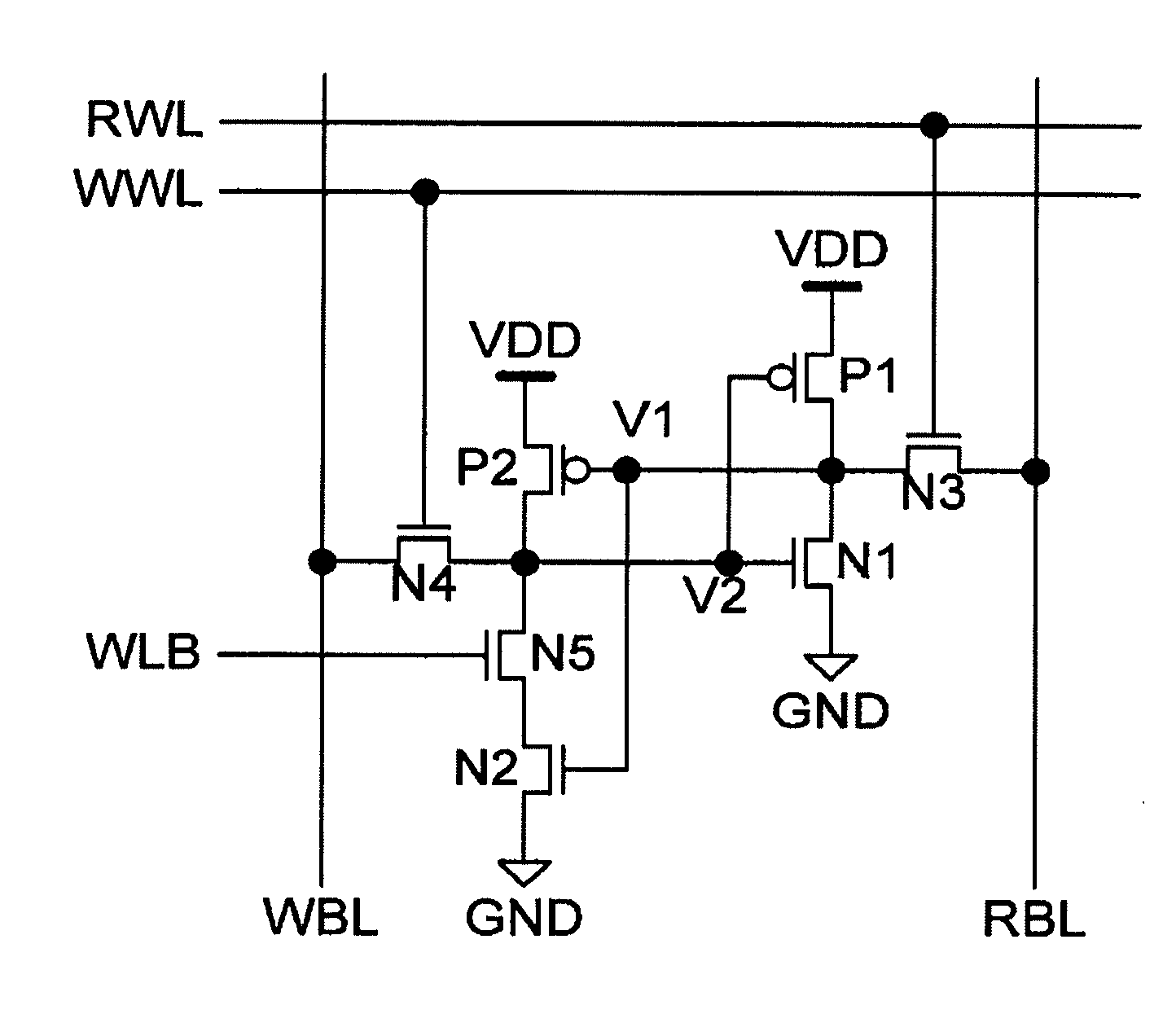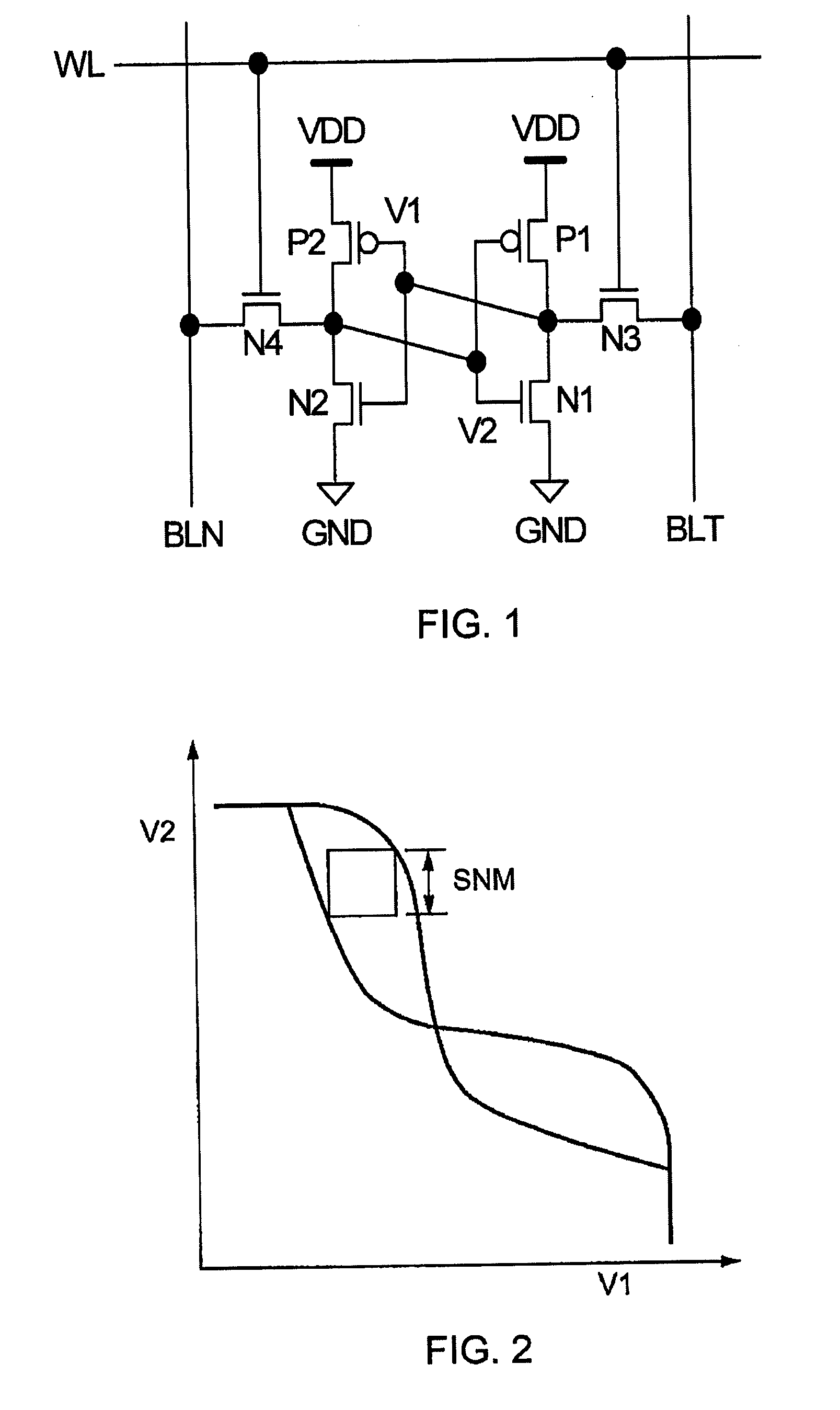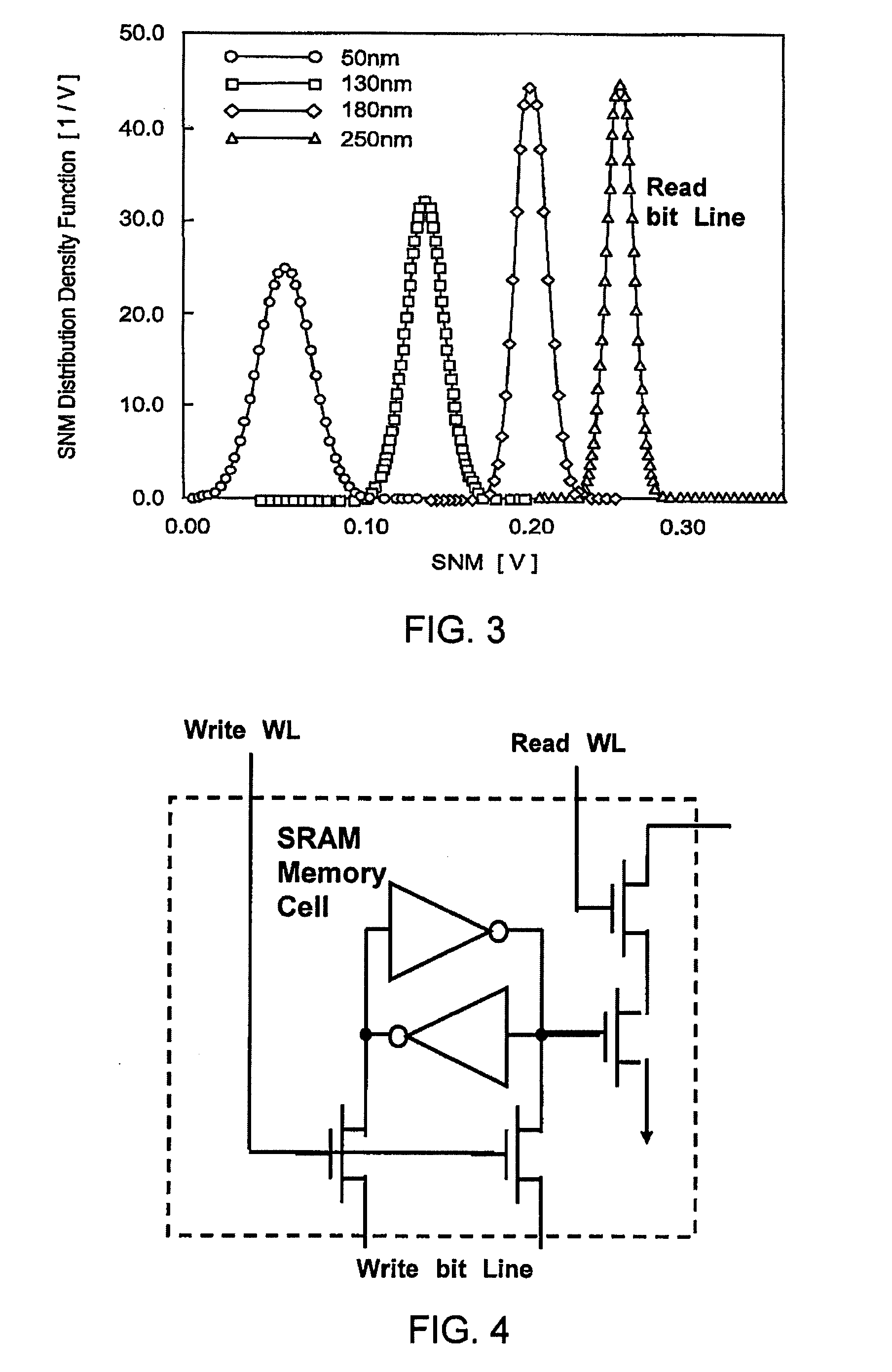Semiconductor memory device and driving method thereof
a memory device and semiconductor technology, applied in the direction of static storage, digital storage, instruments, etc., can solve the problems of corrupted stored data, reduced storage node potential vb>1/b>, and caused corruption of stored data, so as to reduce leakage current, enlarge read margin, and reduce leakage current
- Summary
- Abstract
- Description
- Claims
- Application Information
AI Technical Summary
Benefits of technology
Problems solved by technology
Method used
Image
Examples
first example
[0100]A first example will be described with reference to FIGS. 9 to 13. A semiconductor device in the first example employs SRAM cells each formed by seven transistors as shown in FIG. 5. In order to more reliably hold data of the SRAM cells in a reading operation, an off time of the holding control transistors is set to be equal to a minimum pulse width to thereby prevent corruption of holding data of the SRAM cells.
[0101]FIG. 9 shows a block arrangement explanatory of a flow of signals, and FIG. 10 shows a replica block. FIG. 11 shows operation waveforms of the replica block, and FIG. 12 shows operation waveforms of an SRAM block and an SRAM cell. FIG. 13 shows a multiplexed replica block.
[0102]In the semiconductor memory device 1 shown in FIG. 9, blocks 2 each having an SRAM cell of m words and n bits are arranged in the form of an M×N matrix. Each block has a sub-word driver and a sense amplifier (not shown). The sub-word driver is operable to activate a word line selected by a...
second example
[0118]A second example will be described with reference to FIGS. 14A, 14B, and 15A to 15C. In the second example, a leakage current of the storage node V2 is controlled in a reading operation so as to hold data of the storage node V2. The level of a low potential “0” of the inverse word line signal WLB, which is a control signal for the holding control transistor N5 in the SRAM cell, is set to be 0.1V to 0.2V higher than the ground potential GND so as to increase a leakage current Ioff_N5 of the transistor N5. In this manner, a leakage current of the storage node V2 is set to have the relationship of Ioff_N4+Ioff_N5>>Ioff_P2. Thus, stored data are held.
[0119]A flow of signals between blocks will be described with reference to FIGS. 14A and 14B. FIG. 14A shows a block arrangement explanatory of a flow of signals, and FIG. 14B shows operation waveforms. In the semiconductor memory device 1, blocks 2 each having an SRAM cell of m words and n bits are arranged as a cell array in the for...
third example
[0124]A third example will be described with reference to FIGS. 16A, 16B, 17A, and 17B. In the third example, an off-state leakage current of the access transistor N4 connected to the write bit line WBL in the SRAM cell is controlled to hold data of the storage node V2. At the time of reading from the SRAM cell, the write word line signal WWL has a low potential “0”, so that the access transistor N4 is in an off state. In the third example, the level of a low potential “0” of the write word line signal WWL is set to be 0.1V to 0.2V higher than the ground potential GND so as to increase a leakage current Ioff_N4 of the access transistor N4. In this manner, a leakage current of the storage node V2 is set to have the relationship of Ioff_N4+Ioff_N5>>Ioff_P2. Thus, stored data are held.
[0125]FIG. 16A shows an arrangement of a block 2, and FIG. 16B shows a circuit of a sub-word driver. FIG. 17A shows a generation circuit for the write word line signal WWL, and FIG. 17B shows operation wa...
PUM
 Login to View More
Login to View More Abstract
Description
Claims
Application Information
 Login to View More
Login to View More - R&D
- Intellectual Property
- Life Sciences
- Materials
- Tech Scout
- Unparalleled Data Quality
- Higher Quality Content
- 60% Fewer Hallucinations
Browse by: Latest US Patents, China's latest patents, Technical Efficacy Thesaurus, Application Domain, Technology Topic, Popular Technical Reports.
© 2025 PatSnap. All rights reserved.Legal|Privacy policy|Modern Slavery Act Transparency Statement|Sitemap|About US| Contact US: help@patsnap.com



